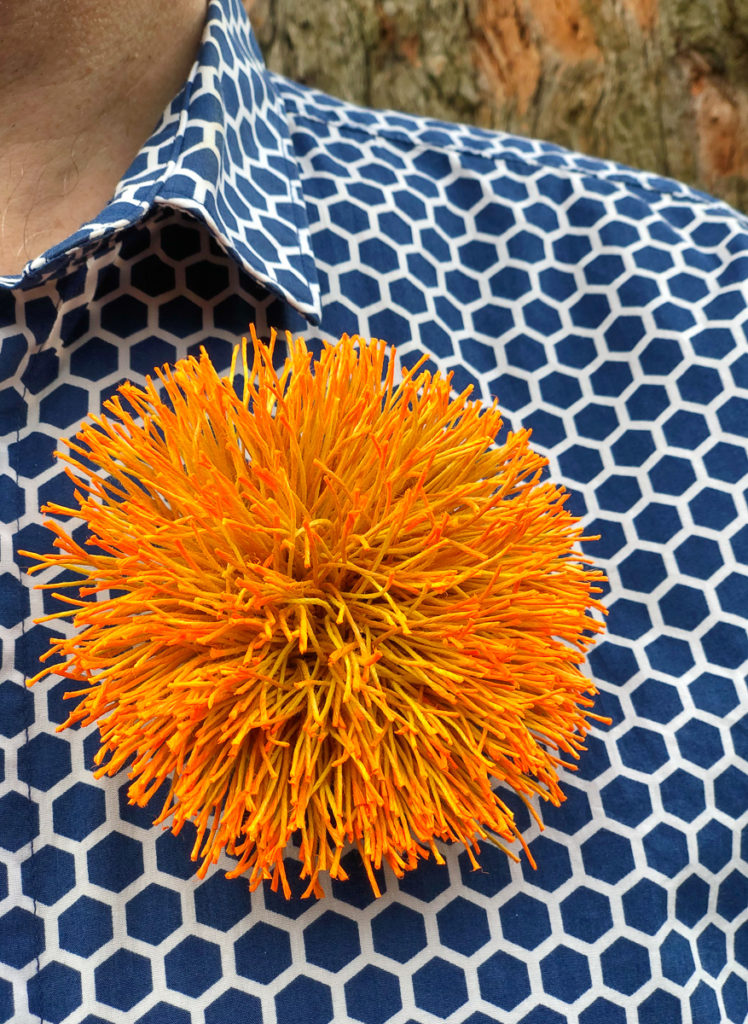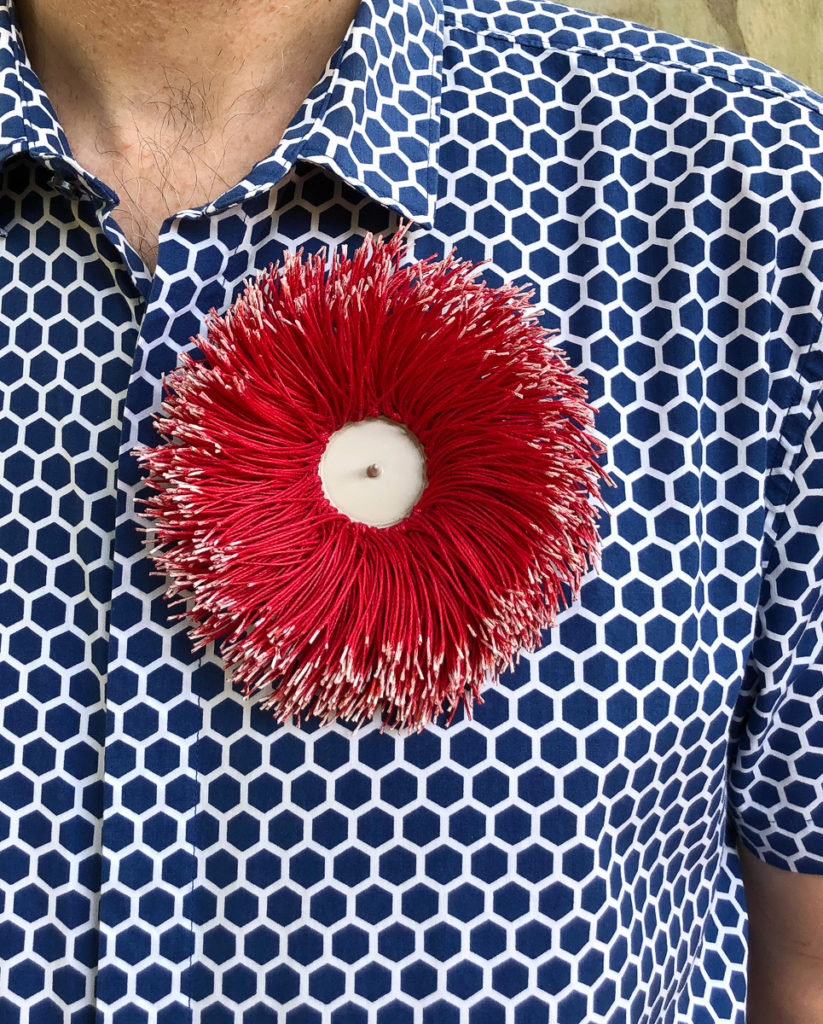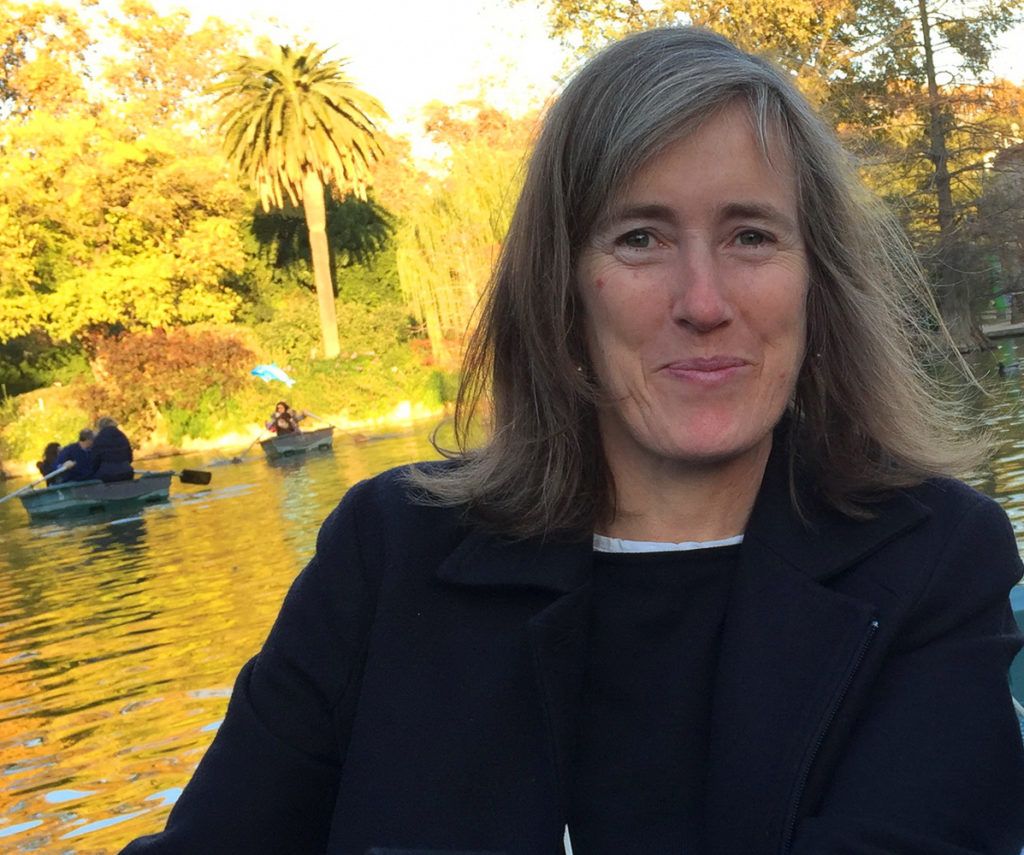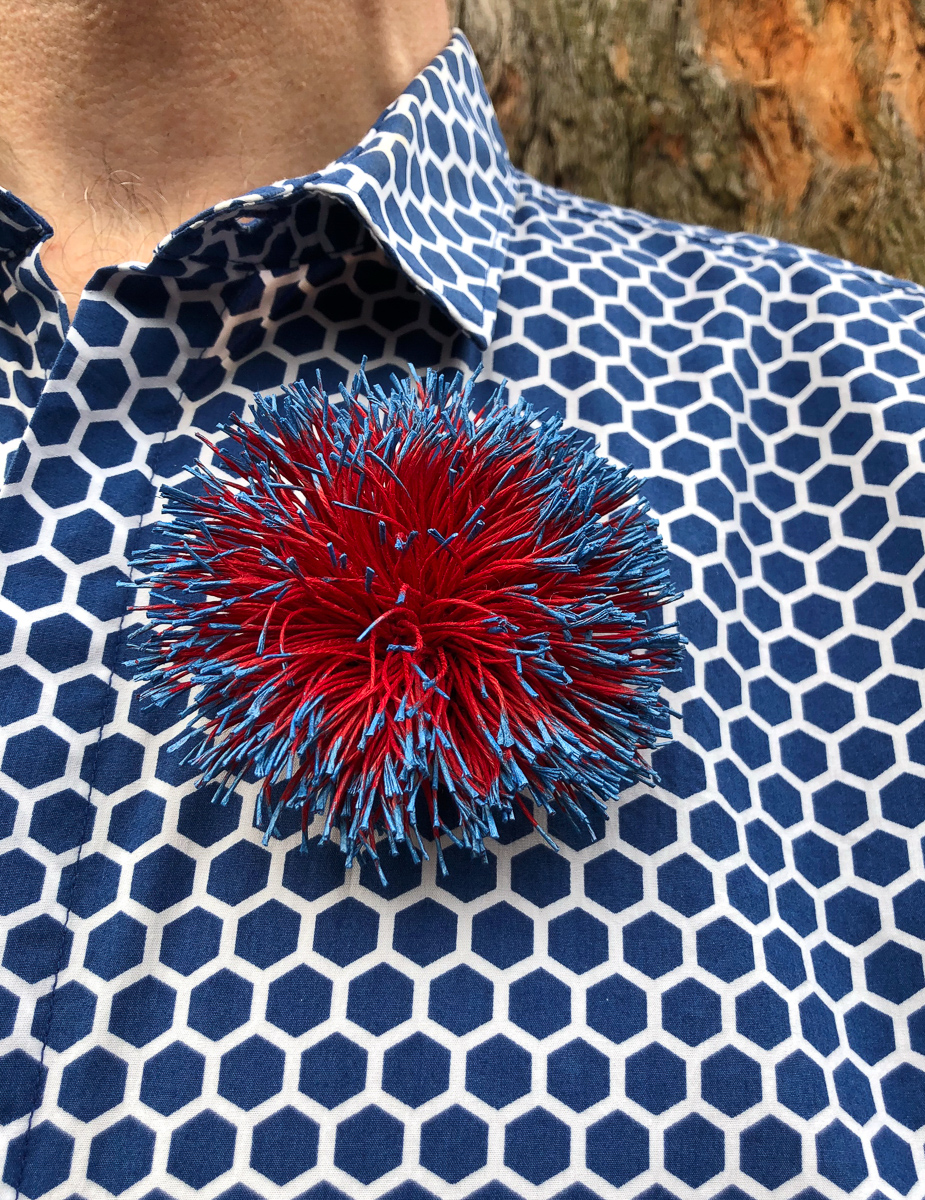Where I work
I work from a home studio in a bushy suburb of Melbourne. Melbourne is a city of about 5 million people. I look out at a garden in the making (having just recently moved). My dog Rosie keeps me company. A cacophony of local birds and changing light fills my days.
What inspired my work
Eucalyptus and wattle trees with their show pony flowers are iconic natural symbols often used to represent Australia. The four works exhibited in Make the world Again reference the flowers of these plants. The wattle flower brooches were developed in response to concerns regarding water use within residential gardens in Australia. During research into water-wise plants suitable for gardens, it came to light that the diverse wattle species (a species prominent in arid Australia) has many varieties suitable for use in domestic gardens. Wattles don’t guzzle precious water once established and are relatively easy to grow. The two brooches talk to issues related to sustainability of resources and advocate for our need to learn how to belong to our place more fully through adapting our gardens to Australia’s climate, soil and level of rainfall.
The eucalypt flower brooches came out of research into the role of trees in the urban environment as a result of an Australia Council residency in Barcelona in 2015. The trees that inhabit Australia’s urban streets, parks, gardens and open spaces frame our quotidian existence, reminding us of the importance of the organic world in our predominantly hard surfaced and densely built city environments. The eucalypt flower brooches are part of an ongoing series titled Litterfall a series that seeks to draw attention to the unique forms of the leaves, seeds, bark and flowers that we Australians habitually overlook and tread on as we go about our days

Vicki Mason, Little spring eucalypt flower, powdercoated brass, cotton, linen, fabric pen, 7 x 7 x 3 cm, photographer: Vicki Mason 
Vicki Mason, Incandescent wattle flower, 2020, powdercoated brass, linen, cotton, fabric pen, 11 x 11 x 5.3 cm, photographer: Vicki Mason 
Vicki Mason, Wintery eucalypt flower, 2020, powdercoated brass, linen, cotton, fabric pen, 14 x 14 x 4.7 cm, photographer: Vicki Mason
How I made it
The brooches all have a cast perforated metal substrate onto which hand fabricated brooch pins have been soldered on. These metal bases are then powdered coated by industry. The eucalyptus flowers have a stigma soldered to the centre of the forms. French waxed linen thread is then knotted into the bases giving these works their unique radiating structure. This construction methodology is time consuming. Added to this labour-intensive knotting process each knot at the edge of a brooch is then hand stitched in to secure it. The ends of each linen fibre is then coloured to bring the jewel to life.
What I am working on
This year is a busy one for exhibiting. I am about to send five works off to Sydney for an exhibition that is touring for two years and then I am organising work for two other exhibitions. Alongside this I am developing a precious range of rings and upskilling in this area. Research wise I am just poking my toe into some new waters. The current bushfires in Australia have alerted me to some issues that resonate and potentially need exploring. I am also very keen to do some study in Japan. I am beginning research regarding how the Japanese relate to plants, gardens and issues of sustainability, adaptability and biodiversity where plants are concerned within the context of the megacity and what we can learn from them in this regard.
Biography

Vicki Mason (born New Zealand) completed a Bachelor of Arts in Classical Studies at the University of Otago and a Diploma in Craft Design from Otago Polytechnic School of Art (Jewellery) before working at Fluxus workshop/gallery with renowned goldsmith Kobi Bosshard. She was awarded a Master of Philosophy degree (Research) in Gold and Silversmithing (ANU) in 2012. She runs production and exhibition practices, teaches and has been awarded many grants and awards. Her work is held in both public and private collections including the Shanghai Institute of Visual Arts, Shanghai, Powerhouse Museum, Sydney and the Art Gallery of South Australia.
Website: www.vickijewel.com
Facebook: vicki.mason.370
Instagram: @vickimasonjeweller

